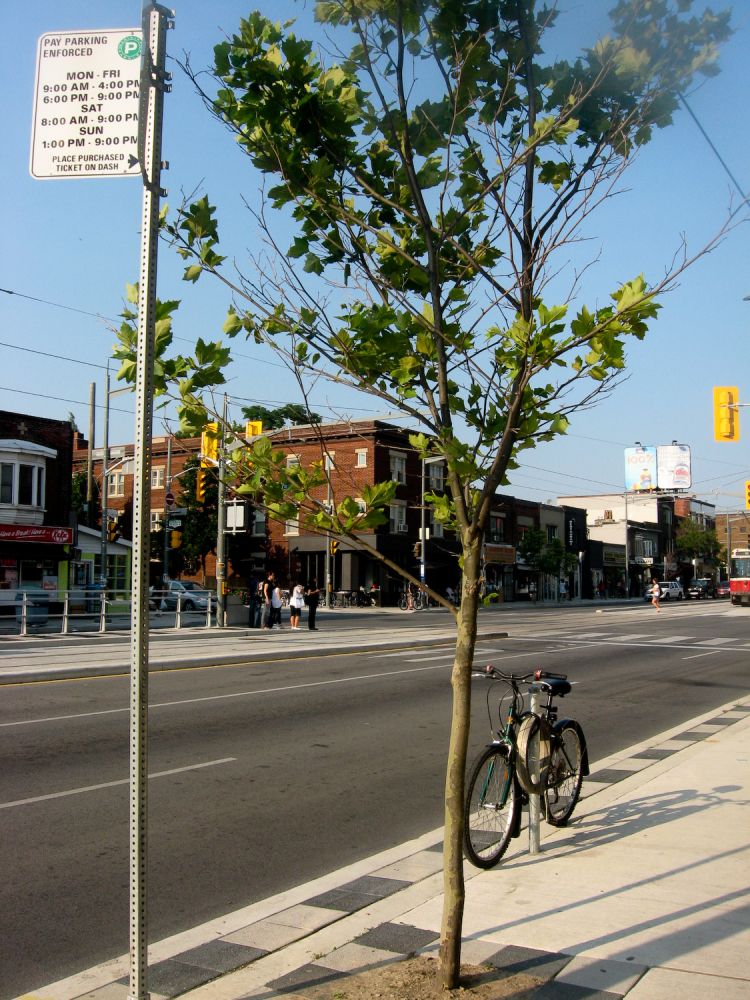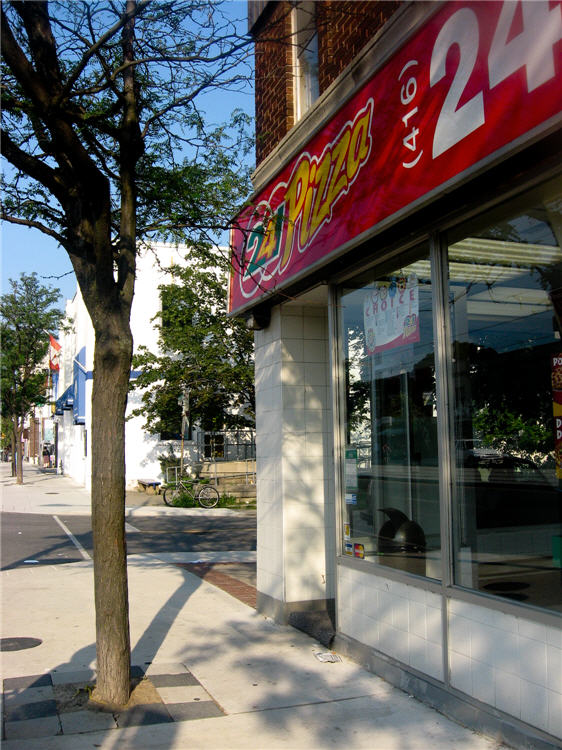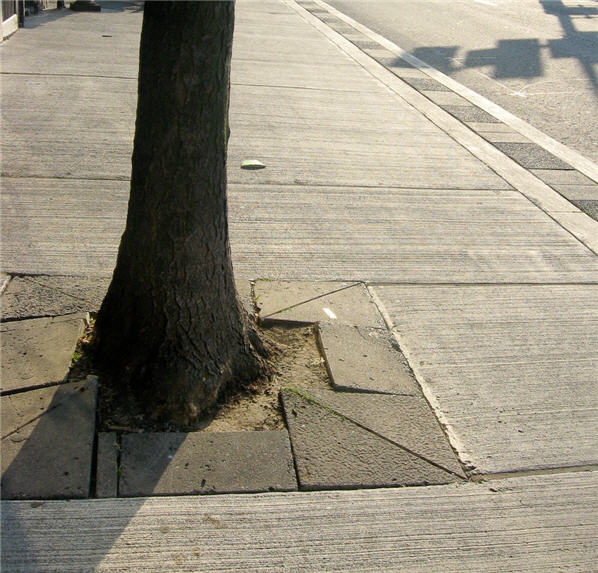Just weeks earlier, I had taken the NeighbourWoods Tree Training course in Leslieville. We were taught to recognize stressed trees, how to gather statistics and how to make simple analytical conclusions based on the results. It was one of those serendipitous moments: I no longer believe in coincidence.
Using my Tree Tenders and NeighbourWoods knowledge, I created a simplified inventory sheet, collected data, had a LEAF friend take photographs, and wrote up a full tree audit. I made recommendations to prevent a similar occurrence the next year, when the dead trees would be replaced. LEAF provided valuable feedback on my report and submitted it to the City of Toronto and my local city councillor, Joe Mihevc. Everyone regarded the situation as serious: this became the first chapter in the St. Clair West Adopt-A-Tree project.

In the spring of 2011, I continued my work with the St. Clair West trees under the official mentorship of LEAF. Amanda Gomm, LEAF's Manager of Volunteer and Community Engagement, brainstormed possible projects and strategies with me so that the plight of the trees continued to be important in the Ward. We also began to involve other groups like the local Business Improvement Area. Amanda connected with Joe Mihevc's staff member who was following the situation while I updated my audit with clarifications on how many of the trees had suffered further decline.
We then suggested having a meeting with interested parties—including representatives from Joe's office, the BIA, LEAF and any concerned community members—to discuss next steps. I hoped to attend one of the BIA's regular meetings to give a workshop on the benefits trees provide, with tips on proper tree care. Amanda and I thought such a workshop would both excite businesses about the replacement trees and encourage them to take an active interest in those that had survived, watering them during the week.

I began using the services of the woman who, by coincidence, is also the president of the BIA. When we realized our common interest, we had several conversations on caring for the St. Clair West trees. This fall, all the interested parties got together. We used a discussion on watering the trees as a starting point, since it was a simple idea and everyone seemed supportive. More startling though was the conversation we had on how we might change the streetscape to create a more livable environment for trees.

The group discussed the possibility of removing the small sidewalk bricks located at the base of the trees, giving them more room and allowing space for mulch. People then began excitedly tossing out idea for personalizing our tree care. Someone suggested adding species labels to the trees, as the Roncesvalles BIA had done, because the labels would educate the community and would develop a sense of trees as living beings in their own right. Another person thought we should erect tree guards, perhaps like the stanchions used on King near Spadina. Stanchions would prevent people locking their bikes against the trees, which would give them at better chance at survival. The group also discussed biodiversity, since my audit indicated that only London planetrees were planted during the improvements, thus putting the street at risk from threats to a monoculture.
Joe then explained the current situation, how the original contractor is now in court, muddying both the replanting date and ownership of the project. Joe worried about how much responsibility each party can and should assume once the trees are replanted, and which models we want to follow. The ideas brought to that meeting were intelligent, sensitive, and timely. Everyone only wanted the best for the trees. It was so inspiring.
The group has a lot of work to do yet, but we came away having accomplished so much more than we thought possible. In 2012, I hope to see a partnership blossom as we personalize our plans and decide what we want to see happening next.
Christine Bruce is a long-time volunteer and has contributed to a wide array of projects and initiatives since she started with LEAF three years ago. She is passionate about rescuing feral cats and telling the stories of Toronto’s cycling community on her blog (which she is currently in the process of turning into a book). You can follow her on twitter here.
